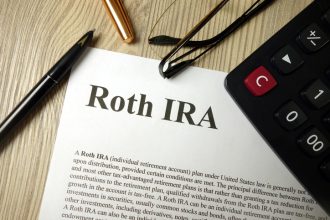A trusteed IRA is a type of individual retirement account that is set up as a trust. This account can benefit those who want to have the tax advantages of a traditional IRA and the asset management of a trust. Here’s a breakdown of what you need to know.
How a Trusteed IRA Works
An individual retirement account (IRA) is a retirement savings account that offers tax advantages to individuals. A trust, on the other hand, is a legal entity that holds assets for the benefit of another, governed by the terms set out in a legal document. A trusteed IRA combines aspects of both to provide the tax benefits of an IRA with the specific control over assets that a trust offers. This type of account is particularly beneficial for individuals who want to manage their retirement savings with the precision of an estate plan.
At its core, a trusteed IRA is set up within a trust, forming a single legal entity that holds and manages retirement assets. The trustee, appointed within the trusteed IRA, has fiduciary duties to manage the account prudently for the beneficiaries’ best interests. This includes making sound investment decisions and ensuring that distributions comply with the trust document’s terms.
The trust document dictates the exact rules for distribution and beneficiary designations. With a trusteed IRA, you can tailor the asset management to fit your particular wishes.
Benefits of a Trusteed IRA

A trusteed IRA can offer account holders benefits in four general areas:
- Controlled distribution: With a trusteed IRA, you have control over how and when the assets are distributed to beneficiaries after your passing. This allows you to tailor the distribution according to the needs and circumstances of your beneficiaries, such as providing for minor children or ensuring that assets are distributed gradually over time.
- Estate planning flexibility: A trusteed IRA offers flexibility in estate planning by allowing you to designate specific beneficiaries and provide detailed instructions for asset distribution. This can be particularly beneficial if you have complex family dynamics, want to support charitable causes, or wish to minimize taxes on inherited assets.
- Management of inherited assets: The trusteed IRA provides professional management of inherited assets by a trustee, who is responsible for overseeing the investment and distribution of funds according to the terms of the trust. This ensures that the assets are managed prudently and in the best interests of the beneficiaries.
- Tax efficiency: Depending on the type of trust established, a trusteed IRA can offer tax advantages, such as minimizing income taxes on distributions to beneficiaries or reducing estate taxes by leveraging estate planning strategies. This can help maximize the value of the assets passed on to your heirs.
How to Create a Trusteed IRA
Before you create a trusteed IRA, consider consulting with a financial advisor or an estate planning attorney to make sure that this type of account is a good fit for your financial goals and that you are in compliance with the legal requirements. Here are five general steps to open an account:
- Establish a trust: Create a trust document that designates the IRA as a trust beneficiary. The document should specify the terms and conditions for managing and distributing the IRA assets. You may include instructions for asset distribution and beneficiary designations, as well as other provisions.
- Select a corporate trustee: Choose a corporate trustee, such as a bank, trust company, or financial institution, to oversee the administration of the trusteed IRA. Make sure that the trustee has experience in managing retirement accounts and understands your goals and preferences.
- Transfer IRA assets: Transfer the assets from your existing IRA into the trusteed IRA. Follow the trustee’s instructions and complete any necessary paperwork or forms.
- Execute trust documents: Sign the trust documents and any other required legal paperwork to formalize the establishment of the trusteed IRA.
- Review and monitor: Review and monitor the trusteed IRA regularly to ensure that it continues to align with your financial objectives and estate planning goals. Make any necessary updates or adjustments as your circumstances change.
Trusteed IRA vs. Using a Trust as an IRA Beneficiary
Choosing between a trusteed IRA and using a trust as an IRA beneficiary involves weighing the benefits and considerations of each option. Here are some key differences you may want to keep in mind:
- Combines the retirement account and trust into one entity.
- Provides specific rules for distributions directly within the IRA.
- This may result in higher costs due to trustee fees.
- Tax considerations include the potential for deferred income tax on growth.
- Involves transferring IRA assets into a separate trust upon death.
- Allows for greater flexibility in structuring distributions.
- Can lead to accelerated depletion of IRA funds due to condensed tax brackets.
- Required minimum distributions are based on the age of the oldest trust beneficiary.
If you’re not sure which option is best for you, consider talking with a financial advisor or other professional.
Bottom Line

The trusteed IRA combines the tax-advantaged growth of traditional IRAs with the professional management and administration of a trust. This can allow you to designate future beneficiaries, as well as how much and when they could inherit assets. Additionally, depending on how the trust is established, you may be able to help minimize income taxes on distributions for beneficiaries or reduce estate taxes. Though you should also keep in mind higher costs due to trustee fees.
Tips for Retirement Planning
- Whether you’re investing your wealth into an IRA or you need help deciding where to put your money for retirement, a financial advisor might be able to help. SmartAsset’s free tool matches you with up to three vetted financial advisors who serve your area, and you can have a free introductory call with your advisor matches to decide which one you feel is right for you. If you’re ready to find an advisor who can help you achieve your financial goals, get started now.
- If you’re not sure how much you need to save for retirement, consider using a free retirement calculator.
Photo credit: ©iStock.com/Fly View Productions, ©iStock.com/NoSystem Images, ©iStock.com/kali9
Read the full article here
















